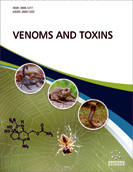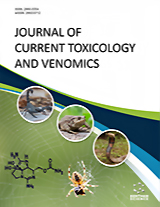Abstract
Development of a new drug molecule is costly and requires a long time. Many attempts have been made to improve the safety of the effective level of "old" drugs, utilizing various ways like individualizing drug therapy, curative drug control, and dose titration. But, recently, important efforts have been made to discover the novel drug releasing systems, which can be supplied to a target system in the human body, while controlling the level and time of delivery. Polymers, whether synthetic or natural, have great importance in pharmaceutical applications, especially in the field of drug delivery. The use of polymers in pharmaceutical applications ranges from their use as binders in tablets to viscosity and flow controlling factors in liquids, and they can be used in suspensions and emulsions; also, in some cases, they can be used as film coatings. Moreover, they may be used as membranes implanted within the living body. Current work highlights the importance of drug delivery systems and the role of polymers in them.
Keywords: Drug delivery system, dissolution, diffusion, erosion based design, pharmaceutical polymers, polymerization, pharmaceutical applications.
Graphical Abstract
[http://dx.doi.org/10.5958/0974-360X.2017.00168.8]
[http://dx.doi.org/10.1002/adma.19970090404]
[http://dx.doi.org/10.1016/j.ijpharm.2018.12.080]
[http://dx.doi.org/10.1021/cm2031569]
[http://dx.doi.org/10.1211/0022357011776612]
[http://dx.doi.org/10.1002/polc.5070510111]
[http://dx.doi.org/10.1016/j.jconrel.2011.12.021]
[http://dx.doi.org/10.1080/10611860600833856]
[http://dx.doi.org/10.1208/s12248-015-9814-9]
[http://dx.doi.org/10.1016/S1367-5931(00)00227-1]
[http://dx.doi.org/10.1016/j.expneurol.2004.06.020]
[http://dx.doi.org/10.1016/j.drudis.2013.09.007]
[http://dx.doi.org/10.1016/S0168-3659(99)00248-5]
[http://dx.doi.org/10.1126/science.2218494]
[http://dx.doi.org/10.1016/j.ijpharm.2004.04.013]
[http://dx.doi.org/10.1177/2211068211428189]
[http://dx.doi.org/10.1016/j.addr.2012.02.005]
[http://dx.doi.org/10.1201/9781482289985]
[http://dx.doi.org/10.4103/0250-474X.45397]
[http://dx.doi.org/10.1080/00986449808912722]
[http://dx.doi.org/10.4103/0250-474X.57290]
[http://dx.doi.org/10.1016/S0142-9612(01)00223-X]
[http://dx.doi.org/10.1016/j.ijpharm.2003.06.001]
[http://dx.doi.org/10.1208/pt060477]
[http://dx.doi.org/10.4103/0972-2327.29202]
[http://dx.doi.org/10.3390/pharmaceutics11030140]
[http://dx.doi.org/10.1021/ma961627y]
[http://dx.doi.org/10.1016/j.actbio.2017.11.023]
[http://dx.doi.org/10.1073/pnas.90.2.552]
[http://dx.doi.org/10.3390/ijms10094033]
[http://dx.doi.org/10.1039/C6BM00584E]
[http://dx.doi.org/10.1295/polymj.17.143]
[http://dx.doi.org/10.1097/01.MP.0000062653.65441.DA]
[http://dx.doi.org/10.1080/03602559.2014.979506]
[http://dx.doi.org/10.1016/j.biomaterials.2013.03.024]
[http://dx.doi.org/10.1016/j.jiec.2014.01.006]
[http://dx.doi.org/10.1016/j.msec.2014.02.016]
[http://dx.doi.org/10.1016/j.ijpharm.2010.04.042]
[http://dx.doi.org/10.1016/j.eurpolymj.2013.06.020]
[http://dx.doi.org/10.1016/j.ijpharm.2014.02.021]
[http://dx.doi.org/10.1590/S1984-82502011000100018]
[http://dx.doi.org/10.1016/j.jmmm.2016.01.070]
[http://dx.doi.org/10.1097/01.iop.0000170417.19223.6c]
[http://dx.doi.org/10.1208/pt020208]
[http://dx.doi.org/10.1002/jps.22689]
[http://dx.doi.org/10.1208/s12249-014-0204-x]
[http://dx.doi.org/10.18433/J3K881]
[http://dx.doi.org/10.4314/tjpr.v10i4.4]
[http://dx.doi.org/10.4314/tjpr.v8i5.48086]
[http://dx.doi.org/10.3390/polym7050777]
[http://dx.doi.org/10.1016/j.jsps.2009.08.004]
[http://dx.doi.org/10.1134/S1811238214010032]
[http://dx.doi.org/10.1016/j.reactfunctpolym.2008.06.016]
[http://dx.doi.org/10.5101/nbe.v4i3.p144-149]
[http://dx.doi.org/10.1093/jac/41.1.11]
[http://dx.doi.org/10.1016/S0969-806X(01)00427-3]
[http://dx.doi.org/10.1007/s10924-013-0584-0]
[http://dx.doi.org/10.1016/j.polymdegradstab.2012.02.007]
[http://dx.doi.org/10.1016/S0278-6915(02)00258-2]
[http://dx.doi.org/10.1007/s00339-007-3995-8]
[http://dx.doi.org/10.1016/j.foodhyd.2012.03.007]
[http://dx.doi.org/10.1016/j.jfoodeng.2007.11.026]
[http://dx.doi.org/10.1016/j.memsci.2004.02.005]
[http://dx.doi.org/10.1016/j.carbpol.2013.01.070]
[http://dx.doi.org/10.1021/ma202092w]
[http://dx.doi.org/10.1016/j.ijpharm.2012.07.014]
[http://dx.doi.org/10.1016/j.carbpol.2010.08.038]
[http://dx.doi.org/10.1002/app.31622]
[http://dx.doi.org/10.1088/1758-5082/5/1/015014]
[http://dx.doi.org/10.4172/2329-6631.1000112]
[http://dx.doi.org/10.17219/pim/99993]
[http://dx.doi.org/10.1016/j.carbpol.2010.01.027]
[http://dx.doi.org/10.1016/j.msec.2016.07.018]
[http://dx.doi.org/10.1016/S0008-6215(99)00263-3]
[http://dx.doi.org/10.1016/j.carbpol.2009.12.040]
[http://dx.doi.org/10.2165/00137696-200301010-00004]
[http://dx.doi.org/10.1021/js970018g]
[http://dx.doi.org/10.1016/S0024-3205(99)00044-2]
[http://dx.doi.org/10.1080/10408690490478091]
[http://dx.doi.org/10.1071/CH9631090]
[http://dx.doi.org/10.1039/a807124a]
[http://dx.doi.org/10.1016/S1381-5148(00)00079-1]
[http://dx.doi.org/10.1088/1748-6041/3/3/034124]
[http://dx.doi.org/10.1038/nmat768]
[http://dx.doi.org/10.1016/S0022-0728(98)00246-0]
[http://dx.doi.org/10.3390/ma11071123]
[http://dx.doi.org/10.1021/jp994274o]
[http://dx.doi.org/10.1016/0167-7799(90)90139-O]
[http://dx.doi.org/10.1007/978-1-349-11167-1_7]
[http://dx.doi.org/10.1007/s10529-006-9156-x]
[http://dx.doi.org/10.1016/0378-5173(94)90360-3]
[http://dx.doi.org/10.1016/0378-5173(94)00281-9]
 18
18 1
1



